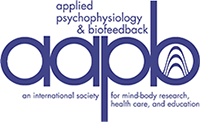Psychophysiologic Remodeling of the Failing Human Heart
Autonomic imbalance is a therapeutic target in heart failure patients. Overactivation of the sympathetic branch of the autonomic nervous system has for years been treated with beta-adrenergic blocking drugs, although it cannot be long before invasive therapies such as renal sympathetic denervation, currently being tested for resistant hypertension, make their way to the heart failure arena. Insufficient parasympathetic input to the heart is already being augmented with implanted vagal nerve stimulators. It is our contention that biofeedback training could provide much of the same benefit as these more invasive therapies in improving autonomic imbalance, with the added advantage of increasing patient self-efficacy. This article describes a pilot study of biofeedback training in patients with end-stage heart failure awaiting heart transplantation. It was our goal to show not only that patients would appreciate this training and benefit from it but also that patient-controlled autonomic modulation could actually reverse the cellular and molecular markers of heart failure, or remodel the failing heart, similar to what we had previously shown for other types of heart failure therapy such as the left ventricular assist device. To our knowledge, this is the first study to demonstrate changes in the biology of the failing heart in response to a psychophysiologic intervention.

Schematic diagram showing the progression from a normal heart to a failing heart and including our previous demonstration that support of the failing heart with a left ventricular assist device (LVAD) results in cellular and molecular remodeling, which leaves the failing heart somewhere between the states of failing and normal. Finally, the possibility that biofeedback may produce some of the same changes as the LVAD is suggested.

Schematic diagram showing individual heart cells on the left and heart muscle contractions on the right. In a normal heart, a normal number of beta-adrenergic receptor proteins is seen on the cell membrane. Normal receptors, when stimulated by elevated circulating levels of norepinephrine, produce a normal muscle response, increasing the strength of contraction and decreasing its duration. In a failing heart, beta-adrenergic receptors on the surface of the cell membrane are decreased because overstimulation with high levels of norepinephrine has caused the cell to internalize the receptors and conserve cellular energy. The reduced number of receptors produces a diminished response to stimulation at the level of muscle contraction. The purpose of our previous work in patients with a left ventricular assist device was to investigate its effects on beta-adrenergic receptor proteins and the muscle response, whereas the study described here investigates the effects of biofeedback training on the same cellular and functional markers of heart failure.


Contributor Notes
